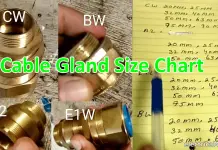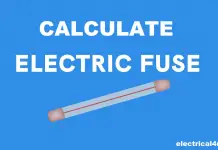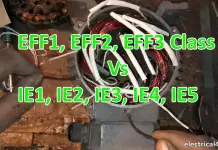Why Carbon brushes are selected as an intermediator:
Carbon brushes are the best choice to carry high current to the rotating part. In this tutorial we are going to see why Carbon brushes are selected…
- a) First of all is its conductivity which is as like as metal.
- b) The main disadvantage metal is that in some temperature metal melts. Most often metal welded because of this property. On the other hand carbon does not melt. It does not hold any liquid state. It vaporize directly from solid state. It is another very good advantage of using carbon brush. No probability to be welded with commutator or slipring. Also its evaporation temperature is also too high. It is almost 3000 to 4000 degree Celsius.
- c) Carbon is lighter than many metal which also make it’s inertia much low and because of this low inertia carbon brush can move easily and smoothly over little rough surface without causing any trouble.
- d) Another important quality is carbon is self lubricating which means low friction. As temperature rises unlike any other metal carbon friction coefficient decreases making it suitable for using in rotating machinary.
- e) Chemically carbon is stable and it’s expansion is also negligible.
These are some reasons which make carbon as a best choice.
Generally carbon brushes not used as single blocks. Normally two wafers are bonded with a cushion pad. Three wafers also seen in the industrial sector. Brush sizes and design and grades depends on many criteria and normally is matter of experts.
[wp_ad_camp_4]
The splitting is mainly done to increase the contact points. Theories says that the number of contact point does not depend on brush cross-sectional area. It is kind of fixed. Normally a carbon block has around 10 contact point regardless with its contact area. So Splitting carbon brushes increase the contact point. If we use two wafer carbon brush then there will almost 20 contact point available.
And also the increased cross resistance due to splitting helps in commutation which is the another good side of brush splitting.
How to Select Good carbon brushes:
Patina is also know as film or skin over DC motor commutator. It is mainly copper oxide that formed on a commutator surface as a result of reaction among copper, graphite, oxygen and other free particles in some range of temperature. Patina is a very thin film and can easily damaged.
Patina is very helpful in commutation, it makes commutation smooth. So during maintenance extra care should be taken to preserve patina.
[wp_ad_camp_4]
Normally in good condition patina formed all over the commutator evenly. And the color of patina can be slightly shiny, coppery brown to black. But keep in mind that the color of patina is not that important thing, the important thing is whether they are forming evenly or not.
Bad patina indicates some abnormality of the environment or the motor. Such as high humidity, the presence of oil and grease particles, uneven commutator surface, uneven current distribution, low load operation, commutation problem, high resistance problem, raised mica, vibration etc.



![What is Normally Open & What is Normally Closed [Video Included] What is NO and NC](https://electrical4u.net/wp-content/uploads/2020/09/What-is-NO-and-NC-218x150.png)









